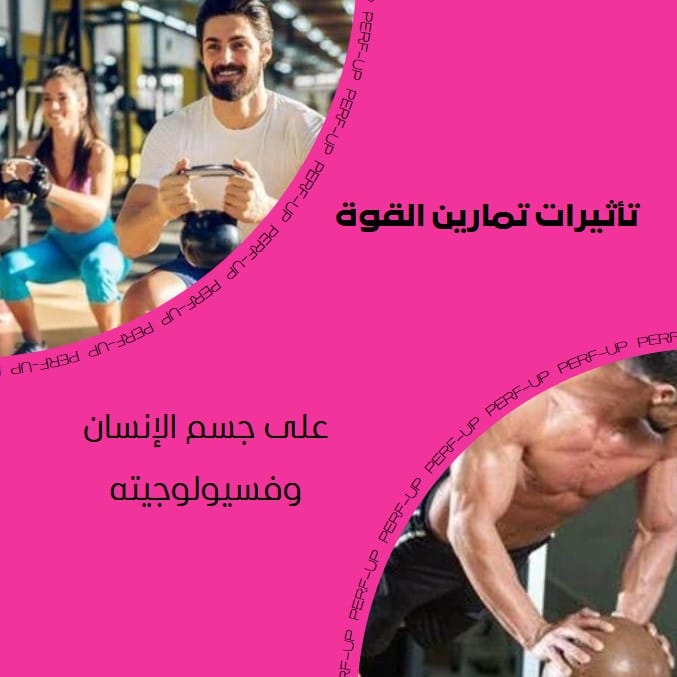
10 Common Exercise Mistakes to Avoid
- Categories Sports Injuries
Athletes face many challenges during training, most notably making common exercise mistakes that can negatively affect their performance and progress. Firstly, some may overlook the importance of a good warm-up before starting a workout, which increases the risk of injuries. In this article, we've listed 10 common exercise mistakesto avoid
1. Not warming the body sufficiently:
Warming up increases blood flow to the muscles and increases body temperature, making the muscles more flexible and ready for intense workouts. Warming up can include light running, stretching, and joint mobilization exercises.
When the body is not adequately warmed up before exercise, it can cause an increased risk of muscle injuries and tears. Warming up increases blood flow to the muscles, which increases the supply of oxygen and nutrients to the muscles during exercise. Warming up also increases body temperature, which increases the elasticity of muscle and fiber tissues, making them more willing to contract forcefully and efficiently during intense exercise.
As for the types of warming up, this may include stretching the main muscles that will be working during the workout, as well as light exercises such as running on the sports mat at a low pace, riding a stationary bike for a short time, or even doing joint mobilization exercises to increase their flexibility and prepare them for the intense movements that may be required in subsequent exercises. Warming up adequately improves athletic performance and reduces the risk of injury, making it an essential step before starting any sporting activity.
2. Over-exercising:
A common mistake is overtraining, which means exercising intensely without adequate rest in between. This can be harmful to the body due to increased stress on the muscles and joints without proper recovery breaks. The end result of this type of exercise can be the development of what is known as muscular fatigue.
When the body is subjected to intense exercise, stress levels rise on the muscles and nervous system, which need time to recover. If the body is not given these necessary rest periods, the risk of muscle strain increases, which can cause severe pain and reduced athletic performance..
To avoid overtraining, it is very important to pay attention to rest periods between workouts and intense workouts. It is advisable to set aside one or two days a week for complete rest, in addition to varying the exercise activity and not sticking to the same type of intense exercise every day..
3. Not using the correct weight:
Not using the correct weight is a common exercise mistake that can negatively affect your workout results and increase your risk of injury. When using too much weight, the body is subjected to excessive stress that can lead to torn muscles or ligaments and can cause joint pain. On the flip side, when using light weight, the muscles may not be receiving enough stimulation to grow and achieve strength.
The correct weight depends on the goal of the exercise and the person's fitness level. The weight should be such that endurance is difficult at the end of the exercise set, but the person can complete a certain number of repetitions correctly. It is best to consult a sports trainer to determine the correct weight and guide the person through the exercises to avoid injuries and maximize the benefits of the exercises..

4. Ignoring self techniques:
Ignoring breathing techniques during your workouts can negatively affect your performance and the results you want to achieve. Breathing techniques are an important part of successful sports training, as they help you focus, stay focused, and motivate you to reach your goals..
One of the most important breathing techniques you can use:
- Focus on goals: Thinking clearly about the goals you want to achieve during your workout will help motivate you and push you to do more.
- Meditation: Meditation helps calm the mind and reduce stress, which increases your ability to focus and control your thoughts and feelings during your workout.
- Motivate with positive thoughts: Changing your outlook to the positive can help lift your spirits and increase your self-confidence, leading to better performance during workouts.
Using breathing techniques can have a significant impact on improving your athletic performance and helping you achieve your goals more effectively.
Breathing properly increases the flow of oxygen to the muscles and helps remove acidic waste products. Breathe slowly and deeply, emphasizing breathing through the nose and mouth.
Not focusing on breathing during exercise can negatively affect your performance and your ability to endure your workout. Focusing on correct breathing helps increase the flow of oxygen to the muscles, which improves their ability to work better and more efficiently. Correct breathing also helps remove the acidic waste products that build up in the muscles during intense exercise, reducing fatigue and increasing your ability to continue exercising for longer.
To breathe properly, breathing should be slow and deep. Each breath should include deep breaths starting from the abdomen and then the chest, emphasizing breathing through the nose for in-breathing and through the mouth for out-breathing. This type of breathing helps achieve a greater balance of oxygen and carbon in the body, and promotes a sense of relaxation and focus during exercise.
6. Ignore the break:
Resting between exercises allows the muscles to relax and recover. Rest periods between exercises should be balanced, with enough time to recover but not long enough to minimize the effect of the exercise.
Skipping a break between workouts is a common mistake that can negatively impact your athletic performance and your ability to achieve the desired results from your workouts. Resting between exercises is an important part of sports training, allowing the body to recover and prepare for the next round of exercises.
During rest, muscles allow their internal structure to recover, helping them recover from the previous workout and preparing them for the next one. Rest also allows your cardiovascular system to return to normal after a workout, and helps reduce the risk of muscle strain.
Rest periods between workouts should be balanced, with enough time to recover but not long enough to minimize the impact of the workout. This can be achieved by estimating the amount of time you need to recover based on how you personally feel and your readiness for the next round of exercise. Sometimes you may need to increase the rest period if the workout is too intense, or you can reduce it if the workout is light. Avoiding skipping a break can improve your athletic performance and reduce your risk of injury.

7. Lack of exercise variety:
Varying exercises helps to stimulate muscles differently and improve overall fitness. Exercises can be varied by changing the type of exercise, increasing the weight, or changing the number of repetitions.
Not varying exercises can reduce the effectiveness of sports training and limit the achievement of desired results. Varying exercises means changing the type of exercises, increasing the weight or changing the number of repetitions regularly to stimulate the muscles differently, which helps improve overall fitness. Techniques that can be used to vary your workouts include
- Change the type of exercises: Replace certain exercises with new ones that target the same muscle group differently. For example, instead of doing a surface press, try a bench press or a dumbbell chest press.
- Increased weight: Increasing the weight used in exercises can increase muscle stimulation and contribute to increased muscle strength.
- Change the number of repetitions: Increasing or decreasing the number of repetitions can stimulate the muscles differently. For example, you can change the work from high-intensity, low-repetition exercises to low-intensity, high-repetition exercises.
Varying your workouts helps balance your training and can contribute to improved endurance, increased strength and reduced risk of injury. Therefore, it's important to include exercise variation as part of your sports training program.
8. Lack of interest in the right technology:
Correct technique helps avoid injuries and ensures that the muscles are properly targeted. Athletes must learn the correct techniques and work to apply them accurately during their workouts.
Failure to pay attention to proper technique during exercise can lead to many issues, including injuries and lack of results. Proper technique is the way an exercise is performed, and includes body position, joint angle, breathing, and proper movement of weights or equipment.
The effects of not paying attention to the right technology include:
- Increased risk of injury: When exercises are performed with incorrect technique, it can increase the risk of injury due to increased stress on the joints or muscles.
- Ineffective progression: Not using the correct technique can reduce the effectiveness of the exercise and the results achieved, as it may not properly target the desired muscles.
- Minimize muscle stimulation: Proper technique allows for greater muscle stimulation, which increases muscle growth and strength.
To avoid these issues, athletes must learn the correct techniques for the exercises they are practicing, and apply them accurately during their workouts. You can get help from a personal trainer to correct the techniques and ensure that the exercises are performed correctly and safely..
9. Lack of attention to proper nutrition:
Proper nutrition promotes muscle recovery and optimal performance during workouts. Athletes should pay attention to eating balanced meals that contain proteins and healthy carbohydrates.
Lack of attention to proper nutrition can negatively impact your athletic performance and your ability to achieve the desired results from your workouts. Proper nutrition plays a crucial role in promoting muscle recovery, increasing energy, and improving overall athletic performance.
During exercise, muscles need adequate energy sources for hard work, and this is largely dependent on the food you eat. Athletes should pay attention to eating balanced meals that contain proteins to promote muscle building and repair, healthy carbohydrates to provide energy for exercise, as well as healthy fats and vitamins and minerals that are essential for overall body health.
Lack of attention to proper nutrition can lead to fatigue and lack of energy during workouts, and can affect muscle recovery after exercise and increase the chances of injury. Therefore, it is essential for athletes to pay attention to eating balanced and varied meals, drinking enough water to stay hydrated during exercise, and balancing proteins, carbohydrates, and fats to ensure results and overall health.

10. Abruptly stop exercising:
The sudden cessation of exercise, especially after a strenuous workout, can have a major impact on the body and overall health. Here are some of the main effects of this sudden quitting and the importance of tapering:
- Loss of fitness: After strenuous exercise, the body becomes accustomed to a high level of physical activity and fitness. When the body suddenly stops exercising, it begins to lose this acquired fitness, leading to a decline in physical performance and endurance.
- Increased risk of injury: After a period of strenuous exercise, muscles and joints are prone to fatigue. When the body suddenly stops exercising, the risk of muscle and joint pain increases due to the loss of muscle support and flexibility.
- Psychological effects: Suddenly stopping exercise can worsen your mood and increase stress and anxiety levels. Exercise is an effective way to de-stress and improve your mood.
To maintain fitness and overall health, it is advisable to taper off after a period of strenuous exercise before stopping completely. This can be done by gradually reducing the duration and intensity of exercise, and continuing to engage in light physical activities such as walking to maintain fitness and avoid injuries.
Recent Posts
The effects of strength training on the human body and physiology
Strength training is an essential component of fitness; it goes beyond just building...
Read MoreThe ketogenic diet for athletes: Benefits, drawbacks, and practical tips
1. Introduction The ketogenic (keto) diet has gained popularity in the years...
Read More



